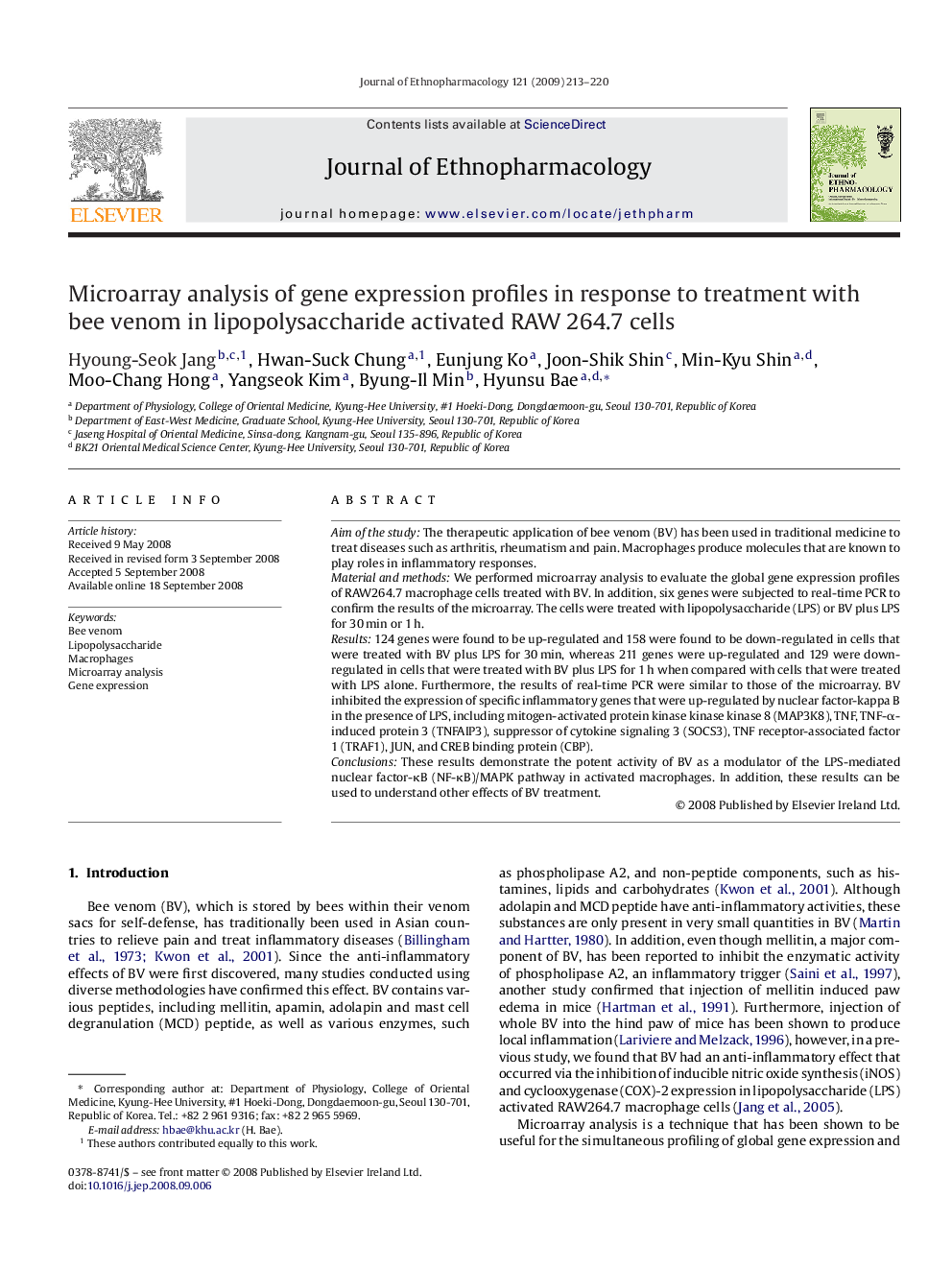| Article ID | Journal | Published Year | Pages | File Type |
|---|---|---|---|---|
| 2547724 | Journal of Ethnopharmacology | 2009 | 8 Pages |
Aim of the studyThe therapeutic application of bee venom (BV) has been used in traditional medicine to treat diseases such as arthritis, rheumatism and pain. Macrophages produce molecules that are known to play roles in inflammatory responses.Material and methodsWe performed microarray analysis to evaluate the global gene expression profiles of RAW264.7 macrophage cells treated with BV. In addition, six genes were subjected to real-time PCR to confirm the results of the microarray. The cells were treated with lipopolysaccharide (LPS) or BV plus LPS for 30 min or 1 h.Results124 genes were found to be up-regulated and 158 were found to be down-regulated in cells that were treated with BV plus LPS for 30 min, whereas 211 genes were up-regulated and 129 were down-regulated in cells that were treated with BV plus LPS for 1 h when compared with cells that were treated with LPS alone. Furthermore, the results of real-time PCR were similar to those of the microarray. BV inhibited the expression of specific inflammatory genes that were up-regulated by nuclear factor-kappa B in the presence of LPS, including mitogen-activated protein kinase kinase kinase 8 (MAP3K8), TNF, TNF-α-induced protein 3 (TNFAIP3), suppressor of cytokine signaling 3 (SOCS3), TNF receptor-associated factor 1 (TRAF1), JUN, and CREB binding protein (CBP).ConclusionsThese results demonstrate the potent activity of BV as a modulator of the LPS-mediated nuclear factor-κB (NF-κB)/MAPK pathway in activated macrophages. In addition, these results can be used to understand other effects of BV treatment.
